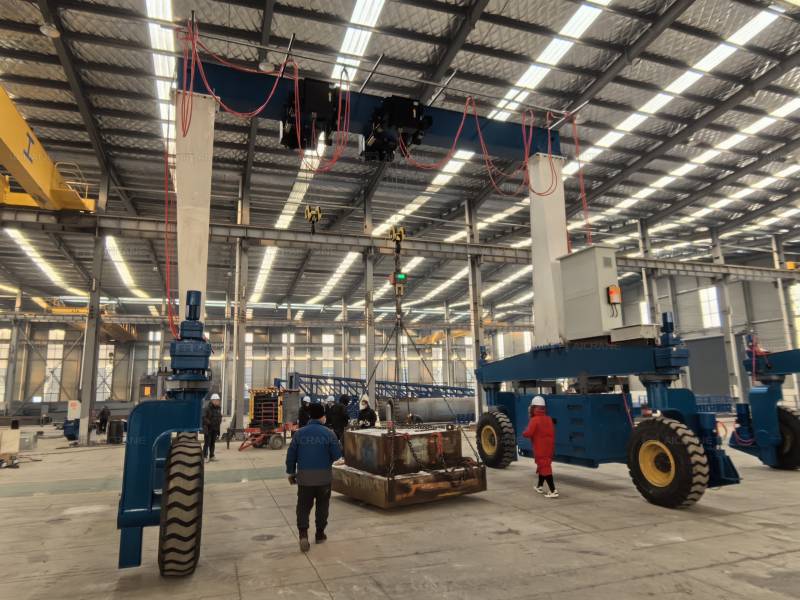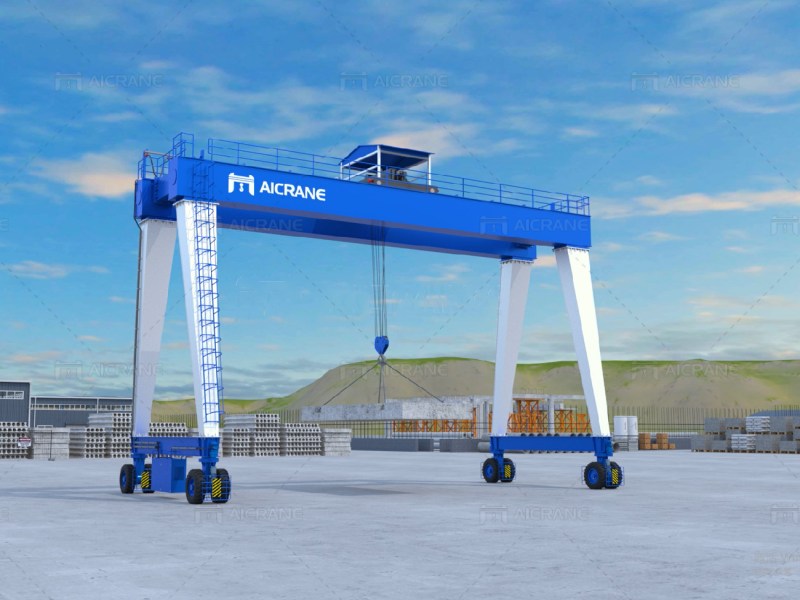In the industrial world, rubber tyred gantry (RTG) cranes stand as indispensable tools for efficient container handling in ports, terminals, and logistics hubs. As vital as they are, investing in RTG cranes demands careful consideration of budgetary constraints and financial planning. Understanding the pricing dynamics of RTG cranes is crucial for making informed decisions and optimizing investments. In this article, we delve into the intricate aspects of RTG crane pricing, shedding light on the factors that influence costs and strategies for navigating budget considerations.

Understanding the Components of RTG Crane Pricing
RTG crane pricing comprises various components, each contributing to the overall cost structure. These components include:
- Base Price: The base price of an RTG crane encompasses the fundamental cost of manufacturing, assembly, and basic functionalities.
- Customization Costs: Tailoring RTG cranes to specific operational requirements incurs additional customization costs. Features such as outreach, lifting capacity, cabin specifications, and automation levels contribute to customization expenses.
- Maintenance and Service Agreements: Factoring in long-term maintenance and service agreements is essential for assessing the total cost of ownership (TCO) of RTG gantry cranes. These agreements ensure optimal performance, reliability, and longevity of the equipment but add to the initial investment.
- Infrastructure Requirements: Building or modifying infrastructure to accommodate RTG cranes, including electrification, rail systems, and terminal layout optimization, entails supplementary costs that need to be accounted for in the budget.
- Technological Advancements: Incorporating advanced technologies such as automation, remote monitoring systems, and energy-efficient features may elevate the upfront cost of RTG cranes but can yield substantial benefits in terms of productivity, safety, and operational efficiency over time.
Factors Influencing RTG Crane Prices
Several factors influence the rubber tyred gantry crane price, including:
- Manufacturer Reputation: Established manufacturers with a proven track record of delivering reliable, high-performance RTG cranes often command premium prices compared to newer or less renowned competitors.
- Quality and Durability: The quality of materials, engineering standards, and build quality significantly impact the price of RTG cranes. Investing in durable, high-quality equipment may entail higher initial costs but can result in lower maintenance expenses and extended lifespan.
- Market Demand and Competition: Market dynamics, including supply-demand imbalances, competitive pricing strategies, and industry trends, influence RTG crane prices. Fluctuations in raw material costs, labor expenses, and geopolitical factors can also affect pricing dynamics.
- Regulatory Compliance: Compliance with industry standards, safety regulations, environmental requirements, and local ordinances may necessitate additional investments in RTG crane design, manufacturing, and certification processes, thereby influencing prices.
- Economic Conditions: Macroeconomic factors such as inflation rates, currency fluctuations, interest rates, and economic stability can impact manufacturing costs, supply chain dynamics, and pricing strategies adopted by RTG crane manufacturers.

Navigating Budget Considerations
Navigating budget considerations when investing in RTG cranes requires a strategic approach and thorough analysis of financial implications. Here are some key strategies:
- Cost-Benefit Analysis: Conduct a comprehensive cost-benefit analysis to evaluate the long-term returns and potential savings associated with different RTG crane configurations, technology options, and service agreements.
- Negotiation and Vendor Management: Engage in negotiations with RTG crane manufacturers, suppliers, and service providers to explore pricing options, volume discounts, and value-added services that align with budget constraints and operational requirements.
- Total Cost of Ownership (TCO) Assessment: Consider the total cost of ownership over the lifespan of RTG cranes, including acquisition costs, maintenance expenses, energy consumption, downtime costs, and resale value, to make informed budgetary decisions.
- Financial Planning and Financing Options: Explore various financing options, lease arrangements, and capital expenditure strategies to optimize cash flow, mitigate financial risks, and facilitate budget allocation for RTG crane investments.
- Risk Management and Contingency Planning: Anticipate potential risks, uncertainties, and contingencies associated with RTG crane investments, such as equipment failures, market fluctuations, regulatory changes, and geopolitical disruptions, and incorporate risk mitigation strategies into budget planning processes.
In conclusion, navigating budgets for RTG crane investments requires a multifaceted approach that encompasses pricing analysis, risk assessment, negotiation skills, and strategic planning. By demystifying RTG crane price points and understanding the underlying factors shaping pricing dynamics, stakeholders can make informed decisions that optimize value, mitigate risks, and enhance operational efficiency in container handling operations. Rubber tyred gantry cranes can be single beam crane or double beam crane to match different work requirements.